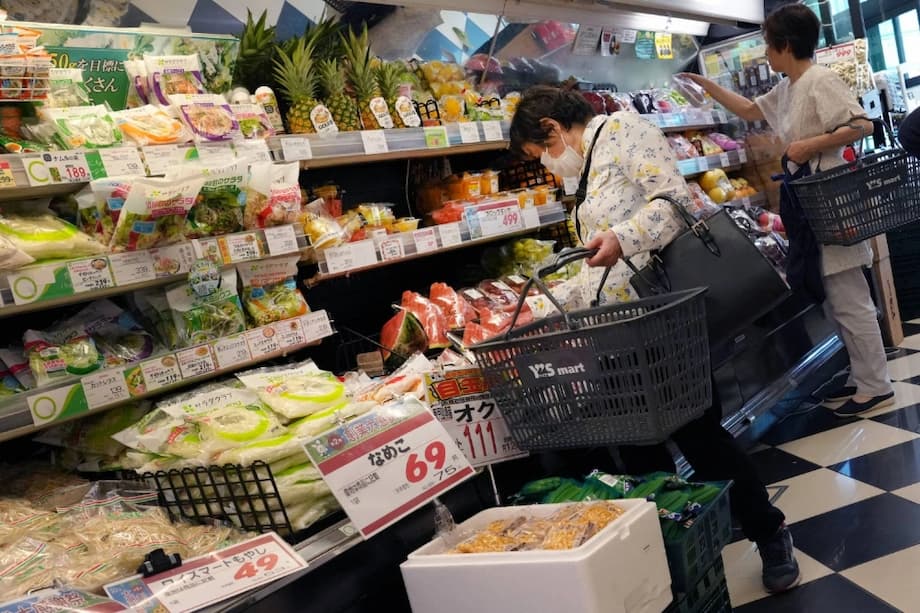Households put cost of living first
Inflation is back as a kitchen table issue across Japan. A new Cabinet Office survey of 2,729 adults carried out from August 7 to September 14 finds that roughly 73 percent want the government to prioritize measures to curb rising prices, up from 66.1 percent in the same survey last year. Anxiety about the overall price level and dissatisfaction with the household food situation are at, or close to, historic highs last seen in the aftermath of the 1973 oil shock.
- Households put cost of living first
- What the latest data shows on prices
- Why food costs are rising faster than everything else
- Food situation concerns and the human side
- Wages, jobs and the tug of war with prices
- How policymakers are responding
- How households are adapting at the checkout
- What could ease the pressure next
- Key Points
Consumer prices are increasing at more than 3 percent a year, and food costs are rising even faster. Wage gains have improved in some sectors, yet many households say take home pay is not keeping up with the checkout total. A widening gap between incomes and the cost of necessities, especially groceries, frames the squeeze.
The survey’s findings matter for behavior. When most people expect further price increases, they change how they shop, save, and negotiate pay. That shift can make temporary cost spikes stick, especially when food, transport and utilities all move up together.
The results also arrive after two years of energy and import shocks, a weaker yen that raised the yen price of global commodities, and a patchy recovery in domestic demand. They help explain why public appetite for anti inflation policy has intensified. They also capture growing discomfort with the household food situation, a Cabinet Office measure that reflects whether people feel satisfied with the quality, quantity and variety of meals they can afford.
What the latest data shows on prices
Official data show the price trend firming in early 2025. Consumer prices that exclude fresh food rose 3.2 percent in January from a year earlier, according to the Ministry of Internal Affairs and Communications. By May, the same measure reached 3.7 percent, the fastest pace in about two years. A gauge that removes both fresh food and energy stood at 2.9 percent in March. Food price inflation is again a central driver.
Rice, the national staple, saw some of the steepest gains, with prices more than doubling year over year in May. Service prices rose 1.4 percent, a slower pace but still higher than a year earlier. The fading of some temporary supports, including subsidies that restrained household energy bills, nudged inflation higher as well.
Why food costs are rising faster than everything else
Companies continue to pass through higher costs. A survey of 195 major food makers found planned price increases for 2,105 items in July, five times the number a year earlier, with an average rise of about 15 percent. Firms named higher raw material, utility, transport and labor costs as the main reasons. The list includes products made of rice, chocolate, chewing gum, potato chips and pasta sauce.
Company price changes at a glance
- Teikoku Databank recorded planned price rises on 2,105 food items in July, averaging about 15 percent.
- Ajinomoto AGF said it will raise retail prices of coffee by roughly 25 to 55 percent.
- Meiji plans increases of up to 11 percent for cheese and milk.
Beyond corporate decisions, supply and demand pressures are at work. Weather related strain reduced harvest quality in parts of Japan last year. A rebound in tourism lifted demand for restaurant staples. The weaker yen raised the local currency cost of imported grain, cooking oil and animal feed, pushing up expenses along the food chain. Any sustained climb in crude oil prices would raise packaging, shipping and fertilizer costs and could set off a fresh round of increases.
Food situation concerns and the human side
The Cabinet Office asks households to rate their food situation. The share of respondents who are dissatisfied with what they can put on the table is hovering around record levels. That indicator captures families trimming portion sizes, trading down to cheaper brands and dropping favorite items to make budgets work.
A recent survey by Save the Children highlights how the burden falls hardest on vulnerable families. More than 90 percent of low income households said they struggle to afford food for their children. About 60 percent reported cutting back or stopping purchases of staples such as rice. The survey covered 7,850 households, including roughly 14,000 children, with monthly incomes around 112,200 yen for a family of two and 151,000 yen for a family of four. That snapshot shows how quickly food inflation bites at the lower end of the income scale.
Concern about the food situation is not only about today’s prices. It reflects fear that the basic diet may become less nutritious and less varied if high prices persist, especially for single parent households and the elderly living alone.
Wages, jobs and the tug of war with prices
The labor market remains tight, and wage settlements improved compared with the years of near zero inflation. The OECD projects that wage growth will gain momentum, yet many families still find that price increases are outpacing pay.
Perceptions are moving too. A nationwide opinion survey by the Bank of Japan carried out from February 6 to March 4 found the average expected rate of inflation over the coming year at 12.2 percent, up from 11.5 percent three months earlier. About 86.7 percent of respondents said prices are likely to be higher a year from now. When expectations rise, households and firms bring forward purchases and seek higher wages, which can keep inflation elevated.
How policymakers are responding
Officials have rolled out a mix of measures to ease the stress. The government moved to release 210,000 metric tons of stockpiled rice to unclog distribution and stabilize prices. Utility support programs and temporary tax relief have offset part of the cost surge for households, and local authorities have targeted extra assistance to low income residents.
Monetary policy is changing shape. After lifting its short term policy rate to 0.5 percent in January, the Bank of Japan has signaled that any further moves will be gradual until inflation is sustained by stronger consumption and steady wage gains rather than imported cost shocks. That stance aims to anchor inflation near target while avoiding a sharp hit to growth.
Policy makers are also watching external risks. A volatile energy market and any new trade barriers can raise import costs. A weaker yen amplifies those pressures by making foreign goods and inputs more expensive.
How households are adapting at the checkout
Households are adjusting habits to stretch budgets and keep meals balanced. Many of the following steps are already visible in supermarkets and surveys.
- Trading down to private label goods and larger value packs
- Buying seasonal produce and locally sourced items when cheaper
- Stocking up during promotions and using loyalty points
- Choosing more frozen or canned options to reduce waste
- Cooking at home more often and planning menus for the week
- Shifting protein choices toward eggs, tofu and chicken
- Mixing rice with other grains to manage cost per serving
What could ease the pressure next
Several developments could ease the squeeze over the next few months. A firmer yen would reduce the local cost of imported food and fuel. Better harvests would relieve pressure on rice and vegetables, and the planned release of government rice stocks should help stabilize packaged rice prices.
On the corporate side, companies that front loaded price increases may slow the pace as earlier cost shocks fade. If wage growth continues to gather speed, purchasing power would improve and households would feel the pinch less even with inflation near current levels.
Key Points
- 73 percent of surveyed adults want the government to prioritize tackling rising prices
- Concern about prices and dissatisfaction with the food situation are near record highs
- Core inflation excluding fresh food rose 3.2 percent in January and 3.7 percent in May
- Rice prices more than doubled year over year in May, making food the main driver
- Food makers plan price hikes on 2,105 items in July, averaging about 15 percent
- More than 90 percent of low income families report difficulty feeding their children
- Bank of Japan survey shows average one year inflation expectations at 12.2 percent
- Government is releasing 210,000 tons of rice and maintaining household support measures
- Bank of Japan lifted its short term policy rate to 0.5 percent and signals a gradual policy path












